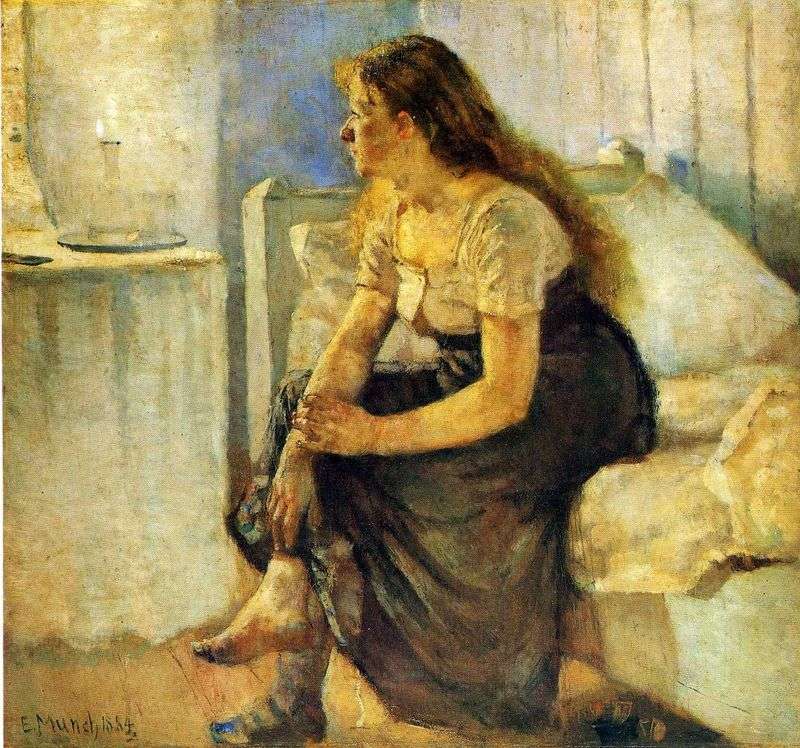
Edvard Munch writes “Morning” in the twenty-second year of life. By that time, for the second year already, he was a student of Christian Krogh, and it is quite natural that his work of that period embodies the principles of realistic art taught by this master.
On the canvas depicted in profile a young girl sitting on a bed. Researchers suggest that the master presented her at the time of dressing or, as was customary to say at the time, at the time of the morning toilet, and the artist admires his model from an unusually close for paintings of this kind of distance.
The composition of the work is thought out to the smallest detail: the young dreamer is located in the center of the compositional space, seemingly strict and orderly thanks to a simple but clear rhythm of vertical lines defining the head of the bed, the left shoulder of the figure, the folds of the sheets and the wall panels. Details of clothing and bedding are presented freely, and the forms and colors are subject to the general character. The subtle play of light and shadow causes a visible vibration of the entire surface of the canvas and, ultimately, creates a feeling of anxiety and tension.
In a letter to his friend, Munch writes, not without pride, that Christian Krog called this picture “perfect.” When the artist in 1895 presented the “Morning” in the Paris gallery, the opinions of critics were very contradictory, but there were still more positive reviews. Even Georges Nanteay, editor of the cultural news column in the Evening Paris newspaper, who always considered the Norwegian artist to be a “very unbalanced and mediocre painter,” wrote in his review: “I was a little wrong in only one case: the picture Morning proves that this master is really very promising – in the sense that he is capable of much. “
 Spring by Edvard Munch
Spring by Edvard Munch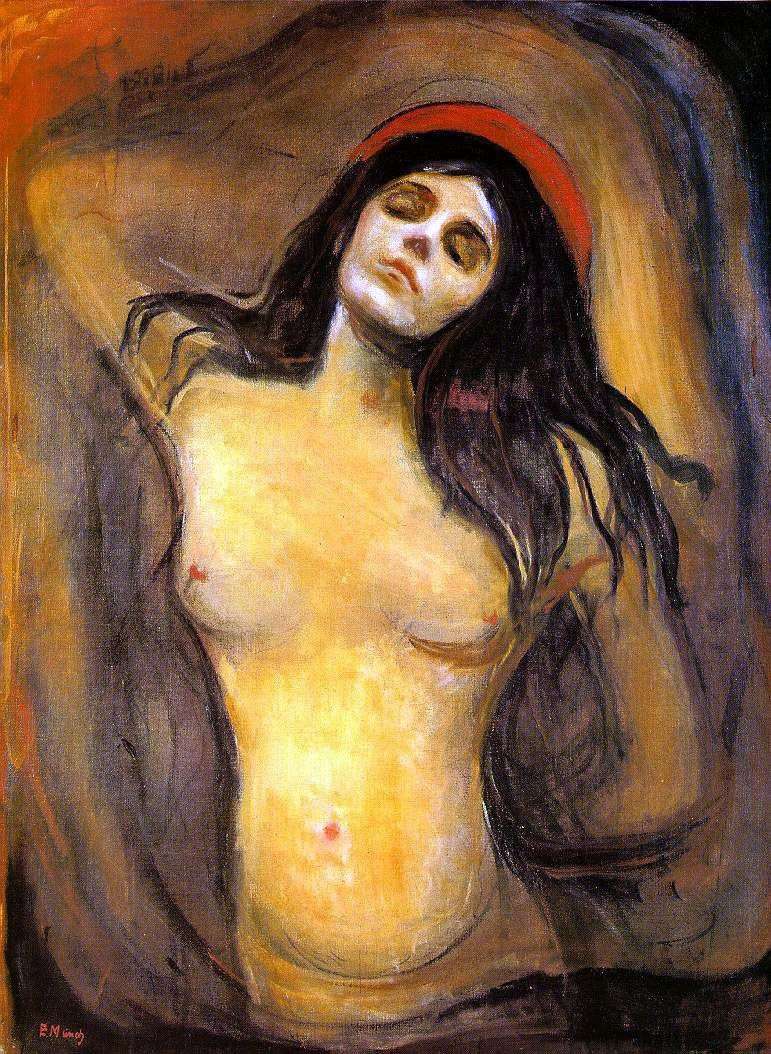 Madonna by Edvard Munch
Madonna by Edvard Munch Yawning Girl by Edvard Munch
Yawning Girl by Edvard Munch Self Portrait by Edvard Munch
Self Portrait by Edvard Munch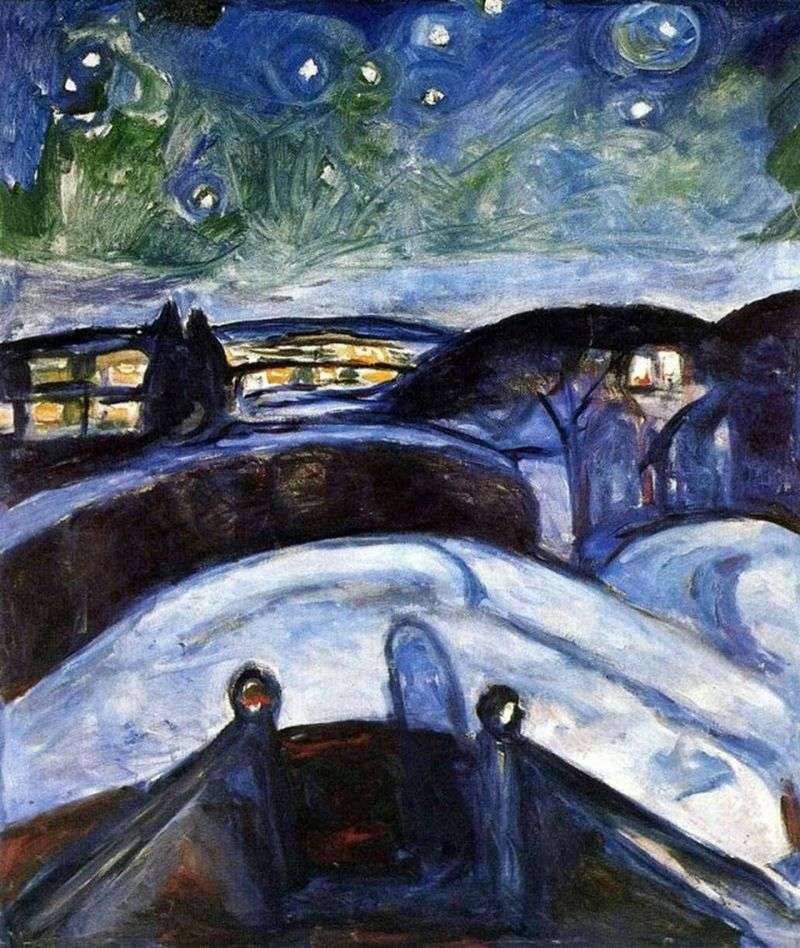 Starry Night by Edvard Munch
Starry Night by Edvard Munch Creek by Edvard Munch
Creek by Edvard Munch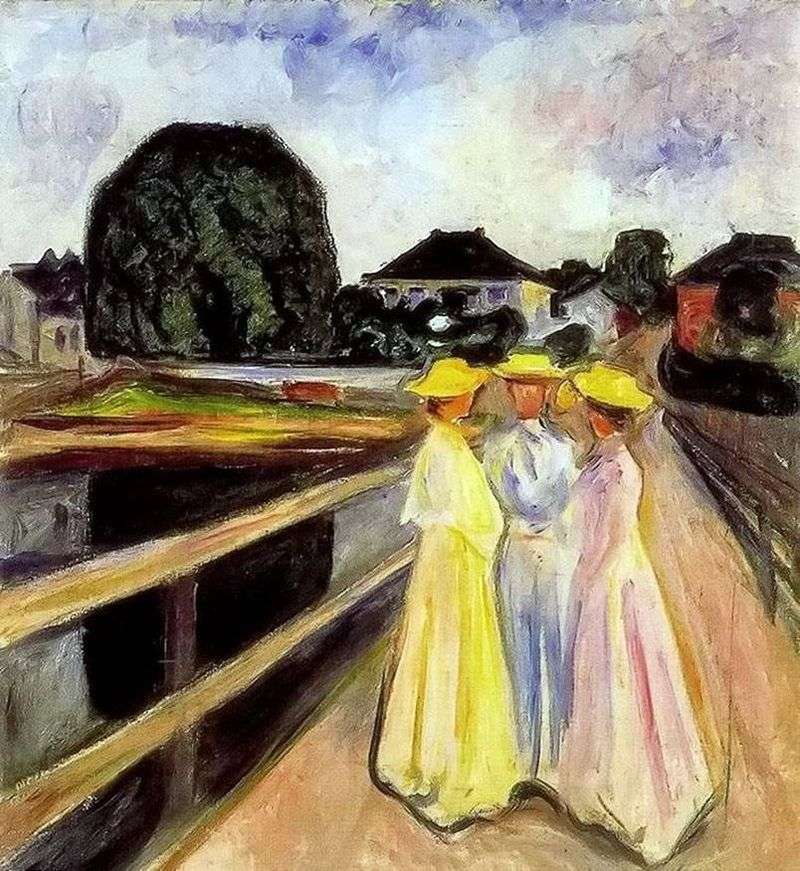 Girls on the bridge by Edvard Munch
Girls on the bridge by Edvard Munch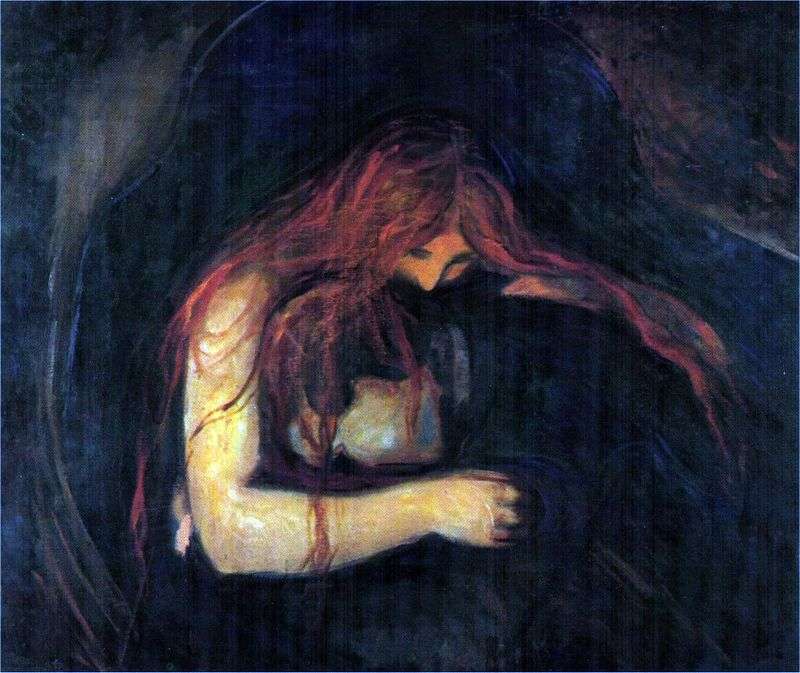 Vampire by Edvard Munch
Vampire by Edvard Munch